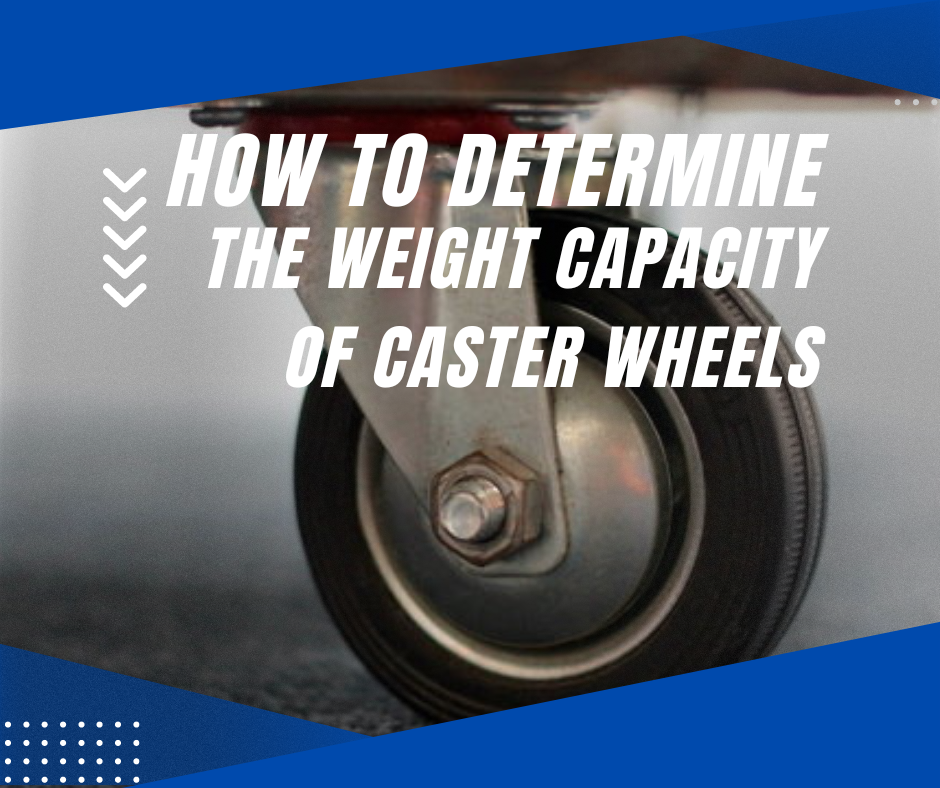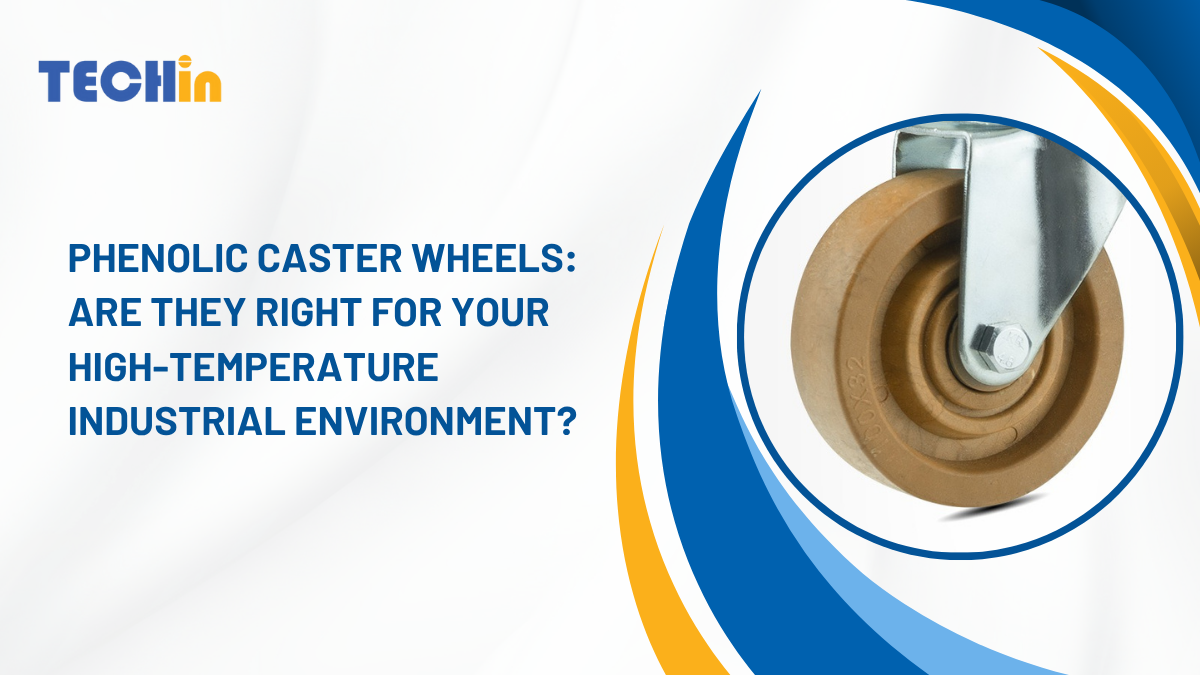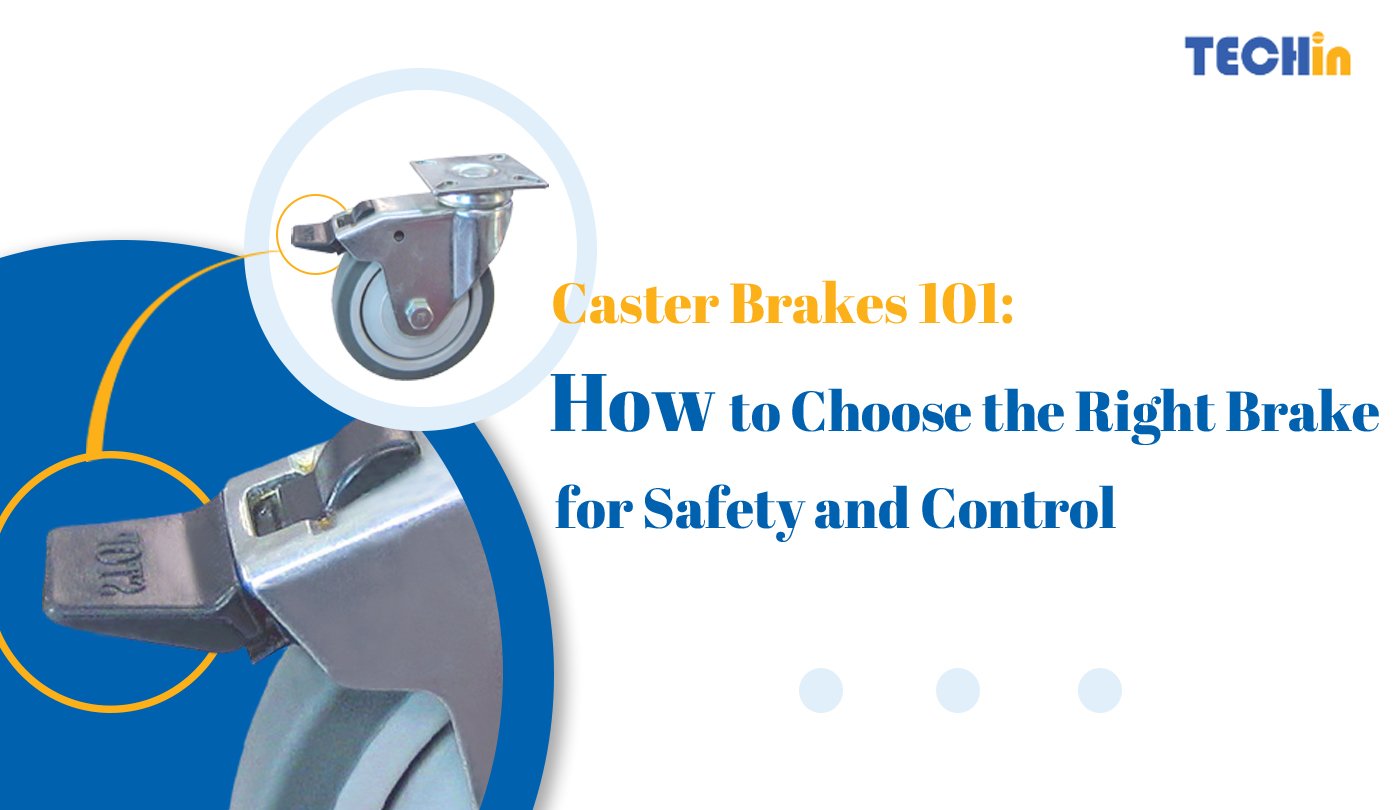When you’re choosing caster wheels, you need to know how much weight they can handle. You don’t want to overload them because that could cause equipment failure or injury. You need to know how much weight each caster can handle. Here’s how you can figure that out.
To calculate the weight capacity of caster wheels, divide the total load weight by the number of casters and include a safety factor. For example, if you have a 4-wheel cart that’s carrying 1,000 lbs, you need each caster to support at least 250 lbs. Add a 33% safety margin to make sure it works under various conditions.
Let’s dive into how to calculate the load capacity of your casters and what you need to consider.
What is Caster Wheel Load Capacity?
The caster wheel load capacity is the maximum load that a caster can support. It’s important to know this so you don’t break anything or hurt yourself. If you exceed the rated weight capacity, you could have a dangerous situation where the caster fails or you hurt yourself trying to push too much weight.
How to Calculate Caster Weight Capacity
Calculating the load capacity for each caster involves a simple formula. Here’s how you can determine it:
- Determine the Total Load: This includes the weight of the equipment, furniture, or cargo.
- Divide by the Number of Casters: This gives you the basic weight capacity per caster.
- Include a Safety Factor: Add a safety margin, typically 33%, to ensure reliability under varying conditions.
Step-by-Step Calculation Example
Let’s say you have a cart that weighs 6,000 lbs. Here’s a detailed breakdown of the calculation:
- Total Load Weight: 6,000 lbs
- Safety Factor: To ensure safety and account for uneven load distribution, add a 33% safety margin.
- Safety Margin: ( 6,000 \text{ lbs} \times 0.33 = 1,980 \text{ lbs} )
- Adjusted Load: ( 6,000 \text{ lbs} + 1,980 \text{ lbs} = 7,980 \text{ lbs} )
- Load Per Caster: Divide the adjusted load by the number of casters (4 in this example).
- ( 7,980 \text{ lbs} / 4 = 1,995 \text{ lbs per caster} )
- Rounded to 2,000 lbs per caster for simplicity.
Calculation Table
| Item | Weight (lbs) | Safety Factor | Adjusted Load (lbs) | Number of Casters | Load per Caster (lbs) |
|---|---|---|---|---|---|
| Cart | 6,000 | 33% | 7,980 | 4 | 1,995 |
| Industrial Equipment | 5,000 | 33% | 6,650 | 4 | 1,662.5 |
| Office Chair | 500 | 33% | 665 | 5 | 133 |
Factors Affecting Caster Load Capacity
Several factors can influence the caster’s load capacity besides the load weight itself:
- Weight Distribution: Loads may not always be evenly distributed across all casters, causing some casters to bear more weight.
- Dynamic Loading: Movements, impacts, and changes in direction can create additional forces on casters.
- Environmental Conditions: Temperature, humidity, and floor conditions (smooth vs. rough surfaces) can affect caster performance.
Additional Safety Considerations
- Total Equipment Weight: Include the weight of the cart or equipment itself in your calculations.
- Regular Inspections: Check for wear and tear regularly to prevent failures.
- Proper Installation: Ensure casters are installed correctly and securely.
Examples of Caster Load Calculations
Example 1: Four-Wheel Cart
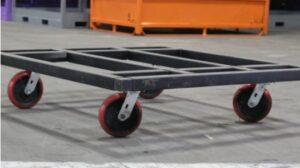
Imagine you have a cart that needs to carry 1,200 lbs. Here’s how to calculate the load capacity:
- Total Load: 1,200 lbs
- Safety Factor: 33% (1,200 lbs × 0.33 = 396 lbs)
- Adjusted Load: 1,200 lbs + 396 lbs = 1,596 lbs
- Load per Caster: 1,596 lbs / 4 = 399 lbs (round to 400 lbs per caster)
| Load Type | Total Load (lbs) | Safety Factor (lbs) | Adjusted Load (lbs) | Number of Casters | Load per Caster (lbs) |
|---|---|---|---|---|---|
| Furniture Cart | 1,200 | 396 | 1,596 | 4 | 400 |
Example 2: Five-Wheel Office Chair

For an office chair with a total capacity of 500 lbs:
- Total Load: 500 lbs
- Safety Factor: 33% (500 lbs × 0.33 = 165 lbs)
- Adjusted Load: 500 lbs + 165 lbs = 665 lbs
- Load per Caster: 665 lbs / 5 = 133 lbs
| Load Type | Total Load (lbs) | Safety Factor (lbs) | Adjusted Load (lbs) | Number of Casters | Load per Caster (lbs) |
|---|---|---|---|---|---|
| Office Chair | 500 | 165 | 665 | 5 | 133 |
Example 3: Industrial Dolly
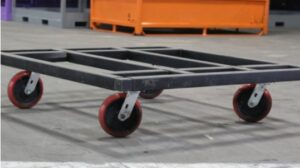
For an industrial dolly carrying 5,000 lbs with four casters:
- Total Load: 5,000 lbs
- Safety Factor: 33% (5,000 lbs × 0.33 = 1,650 lbs)
- Adjusted Load: 5,000 lbs + 1,650 lbs = 6,650 lbs
- Load per Caster: 6,650 lbs / 4 = 1,662.5 lbs (round to 1,665 lbs per caster)
| Load Type | Total Load (lbs) | Safety Factor (lbs) | Adjusted Load (lbs) | Number of Casters | Load per Caster (lbs) |
|---|---|---|---|---|---|
| Industrial Dolly | 5,000 | 1,650 | 6,650 | 4 | 1,665 |
Choosing the Right Caster for Your Needs
Selecting the appropriate caster involves more than just calculating load capacity. Consider the following factors:
- Operating Environment: Determine if the casters will be used indoors or outdoors, and consider the temperature ranges and exposure to chemicals or moisture.
- Floor Conditions: Smooth floors are less demanding on casters than rough or uneven surfaces.
- Movement Requirements: Frequency of movement, speed, and type of maneuvers (straight vs. swivel) all play a role in caster selection.
Caster Selection Guide
| Environment | Floor Condition | Movement Type | Recommended Caster Type |
|---|---|---|---|
| Indoor | Smooth | Swivel | Polyurethane casters |
| Outdoor | Rough/Uneven | Straight | Pneumatic casters |
| Industrial | Temperature extremes | Swivel | Stainless steel casters |
| Office | Smooth | Swivel | Nylon casters |
Tips for Ensuring Safety and Longevity
Regular maintenance and proper use can extend the life of your casters and ensure safety:
- Regular Inspections: Check for wear and tear, and replace damaged casters promptly.
- Proper Installation: Ensure casters are installed correctly and securely.
- Use High-Quality Casters: Invest in casters from reputable manufacturers to guarantee performance and reliability.
Summary
Determining the weight capacity of caster wheels is essential for safe and efficient operations. By accurately calculating the load capacity and considering all relevant factors, you can choose the right casters for your needs and ensure their long-term performance. Feel free to reach out for more expert advice on selecting the perfect casters for your applications.

